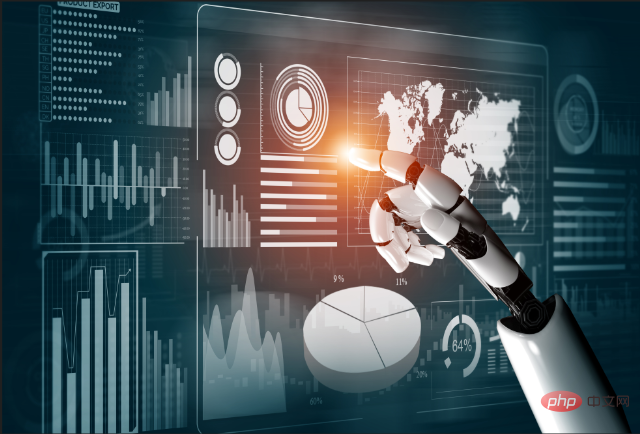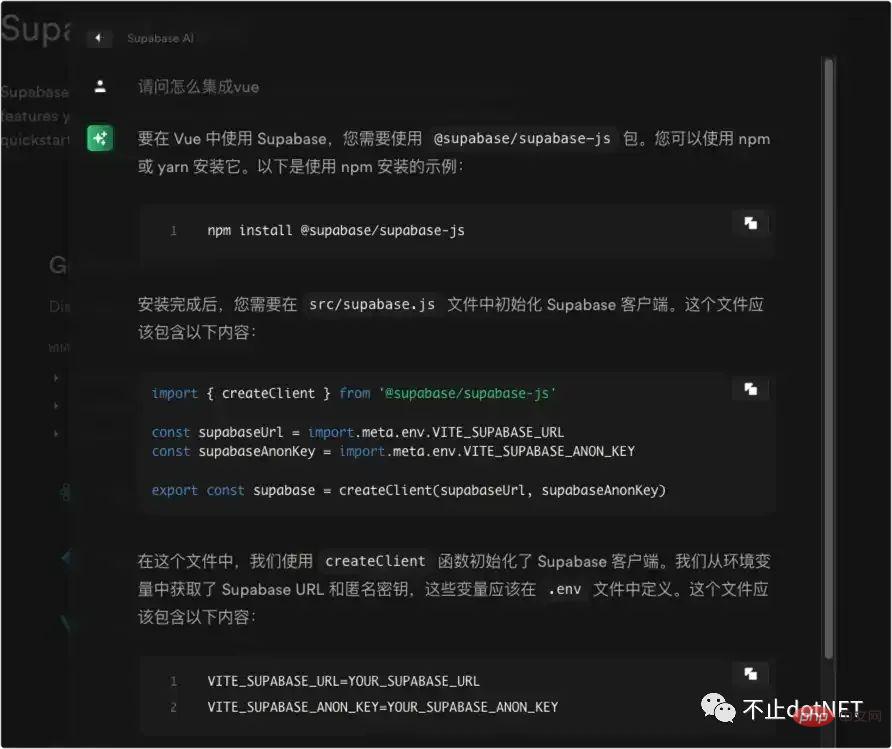Home >Technology peripherals >AI >Thoughts on low-code products brought by ChatGPT
Thoughts on low-code products brought by ChatGPT
- WBOYWBOYWBOYWBOYWBOYWBOYWBOYWBOYWBOYWBOYWBOYWBOYWBforward
- 2023-04-14 22:46:08689browse

It has been mentioned many times in previous articles that we are developing a low-code platform, mainly for ToB companies, to help companies improve their informatization construction and contribute to their digital transformation. strength.
The goal of digital transformation is to reduce costs and increase efficiency. Similarly, efficiency is also crucial to us, which is mainly reflected in: the ability to quickly provide prototypes and communicate with customers before sales, efficient delivery during the implementation process, and after-sales You can find answers immediately to all kinds of questions you encounter.
Recently, ChatGPT continues to be popular, and new applications can be found every day. So, can ChatGPT be combined with our low-code products? Or what kind of efficiency improvement can this big language model idea bring to low-code?
In fact, some giants have already done this.
Salesforce announced the launch of new product EinsteinGPT, a product based on LLM technology that integrates with Salesforce’s main web application and leverages the OpenAI ChatGPT model to help track how often salespeople contact prospects and automatically Write marketing emails without having to write emails manually.
On the other hand, Microsoft also announced the expansion of ChatGPT technology to the Power Platform platform. Power Platform is a low-code product from Microsoft, which is introduced in "Two Low-Code Books I Read Recently". This means that Power Virtual Agents and AI Builder on Power Platform have been updated with ChatGPT encoding capabilities, allowing users to develop their own applications with little or no coding.
Salesforce applies it to business capabilities, and Microsoft enhances platform capabilities. For us, what is needed during pre-sales and implementation is to quickly build applications, and after-sales needs to solve problems quickly, so there are two directions to go in:
1. Improve the efficiency of application construction.
2. Build an intelligent question and answer system.
The current project implementation steps are as follows:
- After the requirements analyst communicates with the customer, the requirements document is compiled.
- Requirements analysts conduct requirements presentations to construction engineers and developers.
- The parts that can be implemented through configuration are built and configured by construction engineers, and other parts are customized and developed by developers and then integrated with the platform.
After low-code products integrate the capabilities of ChatGPT, the system will become like this:
- The system has the ability to understand natural language.
- The document itself formed after demand analysis and customer chat is described in natural language.
- There are chat dialog boxes and interactions in the system.
- Enter the requirement description in the dialog box to identify key information. The key information includes interface identification and parameter extraction.
- Call the platform interface to create applications or adjust local functions.
- Just chatting and finishing the system.
For example: input in the dialog box to adjust the column width of the project name of the current list to 500. At this time, you need to be able to identify the parameters: project name and width 500, and know that you need to call the adjustment column wide interface.
After the existing low-code platform completes various configurations in the background and clicks Save, the front-end collects all data and passes it to the interface. The granularity of the interface is relatively coarse and a lot of content will be stored at one time, but the above example Adjusting the column width setting of a column requires an interface, which requires the interface to be very fine-grained. Therefore, transforming the interface granularity is the first step to achieve intelligence.
As mentioned above, the ability to integrate ChatGPT is not a direct interface to ChatGPT, so it is still quite difficult to implement. However, there is a time period for a new technology to rise and become completely popular in the ToB market. As long as the direction is right, there is definitely time to prepare.
There are currently several problems in the project implementation process, which is why an intelligent question system is very important:
- Because the platform has many functions and is very flexible, the same People with different needs have different methods and approaches to implement it, and the workload may vary several times;
- For various product problems encountered during the implementation process, you need to ask familiar colleagues or consult product team.
The current way is to search through documents. A lot of documents have been accumulated over the years, such as: Business scenario cases, operation manuals, implementation FAQ manuals, etc., but Based on keyword search, there are several problems with keyword search:
- Many times I don’t know how to extract keywords.
- The search results are very large and cannot be accurately matched. As the number of documents increases, it is necessary to filter through a large number of results.
- When looking for a construction solution for a certain business scenario, the matching is very poor.
If you follow the ideas of ChatGPT, the logic of the intelligent question and answer system is like this:
- All precipitated documents (corpora) generate vector data and store them in the vector database.
- The input natural language generates vectors, calculates similarity, and finds relevant results.
- Organize the output.
Regarding this question, I asked Mr. Zhang Shanyou on Knowledge Planet. The following picture was provided by Zhang Shanyou:

Baoyu is pushing Also answered similar questions:
https://twitter-thread.com/t/1641656561650249730.
However, the parameters provided by Zhang Shanyou and Baoyu all rely on the OpenAI interface. Is there any way to achieve this without relying on OpenAI? This requires further study and research.
I recently saw that the Supabase product documentation provides AI Q&A (https://supabase.com/docs). This effect is what I want to achieve. In summary, it is based on natural language input, giving an Precise answer.

The future has arrived, and both products and individuals need to continue to learn and evolve in order not to be eliminated.
The above is the detailed content of Thoughts on low-code products brought by ChatGPT. For more information, please follow other related articles on the PHP Chinese website!
Related articles
See more- Technology trends to watch in 2023
- How Artificial Intelligence is Bringing New Everyday Work to Data Center Teams
- Can artificial intelligence or automation solve the problem of low energy efficiency in buildings?
- OpenAI co-founder interviewed by Huang Renxun: GPT-4's reasoning capabilities have not yet reached expectations
- Microsoft's Bing surpasses Google in search traffic thanks to OpenAI technology

